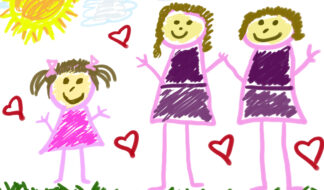By Dawn Wolfe Gutterman
DETROIT – If you are a gay man and have a gay brother, Dr. Alan Sanders wants to talk to you. More specifically, he wants both of you to participate in a study of the influence of genetics on sexual orientation.
Sanders is Director of the Behavior Genetics Unit at Evanston Northwestern Healthcare Research Institute, which is conducting the study. He was in town on March 23 for a talk at Wayne State University on "Homosexuality and Genetics."
According to the Institute, "Prior studies have provided compelling evidence that genes play a role in sexual orientation in some men. None of these studies has been definitive in the sense of identifying particular genes. This study is designed to detect which genetic regions might be linked to male sexual orientation, which will help clarify how genes contribute to human behavior."
In order to produce a more definitive study, Sanders and his team are attempting to recruit 1,000 pairs of gay male brothers, who are asked to fill out a short questionnaire and give a blood sample.
Sanders said that he and other scientists study sexual orientation for many reasons. "Sex is very important, obviously, for biology – for reproduction, for future generations, evolution, you name it," he said. "The study of sexual orientation can be a way to try to increase understanding in some of these sorts of basic areas."
The interest doesn't stop at homosexuality. "We're just as interested in the development of straight sexual orientation as we are in the development of gay sexual orientation," he said.
One "quandary" that Sanders and his team hope to find an eventual answer to is the fact that, despite the fact that homosexuality is heavily influenced by genetics, the number of gay men in the population has stayed stable even though gay men produce fewer biological offspring than their straight counterparts.
"One of its [evolution's] main principles is what we call 'selection of the fittest,'" he said. "In that sense 'fittest' means reproductive fitness, which is measured by how many offspring you produce. So in that sense gay men are not reproductively fit because they don't have as many offspring, so the gene variances that they have are less likely to be passed on. So if that's the case how come it's not diminishing in the population? This is a quandary, and this quandary has been around for decades."
In addition to genetics, which Sanders said provides about 40 percent of the contribution to human sexual orientation, another possible contributing factor is hormonal changes in the mother's womb.
"That's right up there with genetics as far as a contributing area to sexual orientation in humans," Sanders said.
In addition, Sanders cited the "older brother effect."
"It turns out that the more older brothers a man has, the higher chance that he will be gay," Sanders said. "It turns out that each older brother increases the chance by about a third. Families are not as big as they used to be, in the U.S. anyway, so this is maybe not as big an effect as it might be in other demographic scenarios. [But] on a population level it's a sizeable effect – it's maybe around 10-15 percent of the contribution in males."
Given the complexity involved in the development of sexual orientation, Sanders said, "I don't think that's a real possibility," when asked whether a genetic test might be developed to check fetuses for a "gay gene." Some have worried that such a test might be used by homophobic would-be parents to selectively abort fetuses or by religious extremists to urge that children born with a "gay gene" be sent to anti-gay "therapy."
According to Sanders, "We think it's [the development of sexual orientation] pretty complex. We think there are multiple genes involved," which would make developing such a test very difficult.
Another factor in the way of developing a test for a "gay gene" is the fact that sexual orientation isn't entirely determined by genetics.
"If you have the first gay male identical twin, what's the chance the second one will be gay? It's about 50 percent, about half the time. That's a lot more than the relevant comparison, which is around 20 percent for the fraternal twin, and it's a lot higher than the average population, which is 3-4 percent, but it's a far ways from 100 percent. So it's [sexual orientation] definitely not totally genetic," Sanders said.
Topics:
News









